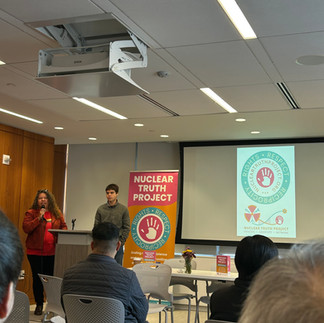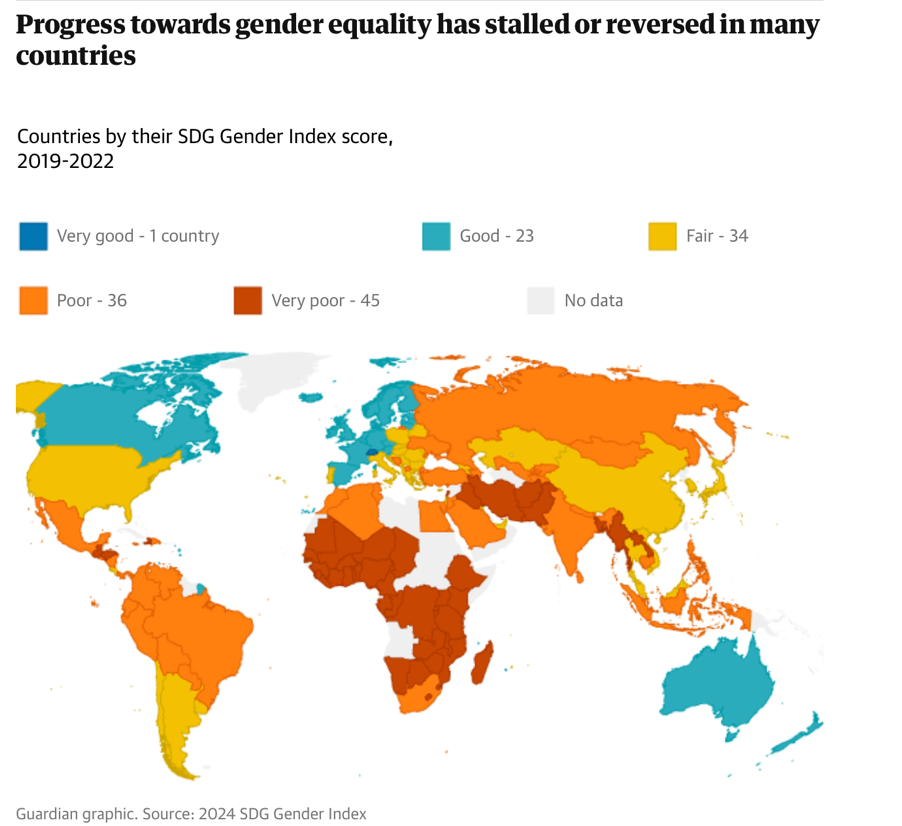3rd Meeting of States Parties: Day One
- UN House Scotland

- Mar 4
- 4 min read
By Elena Kerr

Listen to and hear our Anangu Story
This side event was hosted by the Nuclear Truth Project where the main speaker was Karina Lester, a second-generation survivor of the British nuclear test at Emu Fields on 15th October 1953, accompanied by her son William Hughes, third generation survivor and grandson of Yami Lester. This nuclear test was the first mainland atomic bomb test in Australia, however the Indigenous communities are still fighting for the Australian government to sign the TPNW, as traditional land is used for nuclear waste dumping. Karina shared her and her father’s story of survival, struggles with the nuclear industry, and resistance from Yankunytjatjara Country in Australia towards the nuclear testing on their traditional lands. The British nuclear test in 1953 had huge impacts on the Indigenous people in Australia where people got sick after less than 24 hours, experiencing skin rashes, vomiting, blindness, as well as other long term medical issues. At the time of the bombing, Karina’s father and their people did not have vehicles to get them to hospitals for treatment. This further lead to the lack of medical records of the impacts of the nuclear test. This became problematic as the Australian and British government were not listening and is still not listening as they have yet to give an apology to the Indigenous communities. Karina’s relatives were digging holes in the ground to protect children and elderly people from the black mist from the bomb. There is not yet any acknowledgement by the Australian and British government of this nuclear injustice, however, Karina and her relatives alongside the Indigenous communities of Australia are working as translators in driving the conversations mobilising action for nuclear disarmament. The poisoning of traditional lands of Indigenous people is a human rights issue in which the story of Karina and her relatives are vital in the recognition of, ratification, and implementing of the TPNW in practice.
Read more about the Nuclear Truth Project: https://nucleartruthproject.org
Impacts of Uranium Mining
This panel discussion was hosted by the Nuclear Truth Project including the speakers: Teracita Keyanna, Janene Yazzie, Dr Tommy Rock, and Dr Teresa Montoya, with Petuuche Gilbert as the moderator. The speakers were from tribal nations in Arizona and New Mexico, which are areas affected by uranium mining and nuclear weapons testing during the Cold War. This discussion highlighted perspectives of Indigenous communities, scholars, and policy advocates on the ongoing impacts of uranium mining on their land, health and the environment. The speakers talked about specific impacts on children going to schools where the water contains uranium, and how this leads to autoimmune diseases and cancers. Native Americans are 19% more likely to have plumbing issues, and for those people who lack indoor plumbing systems must collect water from wells which are not safe as they are contaminated with uranium. The radiation exposure dosages do not consider women, children, and pregnant women, as the standard of measure is concerned to a male. As recent as last month the Pinyon Plain Mine started transporting uranium through Navajo Nation. The speakers emphasised the need for policies concerning the public who are affected, the footprints of nuclear energy, and the safeguarding for all lives. The burden of proof is put on Indigenous communities, however, these speakers are providing proof of water samples that contain uranium fighting for justice and addressing harms on the community. When uranium is taken out of the water it leaves the water with other waste materials, therefore the US government’s response in the case of a primary school in Navajo Nation having water with 3 times more uranium than acceptable, was to dilute to acceptable amount. These issues do not only occur from water, but also from wind, soil, and food. For the UN member states to understand that the TPNW must address uranium affected communities, it is essential to listen to the voices, expertise, and stories of Indigenous communities.
Read more about the Nuclear Truth Project: https://nucleartruthproject.org
Creative Resistance: The Arts, Youth Advocacy, and Fashion for Nuclear Disarmament
This event was hosted collaboratively between the PEAC Institute, and Fashioning for Social & Environmental Justice (FSEJ). The speakers included: Rebecca Irby, Runa Ray, Brianna Park, Brooklyn Simmons, James Height Jr., Jahrik Browner, Jimmie Henderson, Noah Richardson, Sashasra Sivaraman, Priya Williams, Yusuf AkbarPr, and McBride. The event explored the intersection of youth advocacy, creative expression, and disarmament education in the context of nuclear disarmament. The speakers demonstrated the effect and power of creative artistic mediums as a catalyst and inspiration for peacebuilding. Art brings people together and translates language. It inspires action and advocacy exemplified with the Mexican Muralist Movement and the George Floyd mural in Minneapolis. The speakers explained how art can act as a catalyst for provoking deep reflection along with cultural preservation, storytelling, and building awareness. They discussed the psychological aspect such as the emotional impact of art in terms of emotional connections to impacts to issues of class, labour, and human rights. The power of art can be used as a tool for education and social change by making stigmatised topics approachable, allowing people to look past controversy. The speakers from the PEAC Institute discussed how youth can mobilise public opinion, driving force for movements, being leaders in change. The speakers from FSEJ discussed how one can solve global issues through the lens of fashion. 20% of global wastewater is from textile production. With water scarce there is a rise of conflict due to the utilising of resources. The speakers explored how what we wear is a statement, and how our clothing has hidden costs, and how design is the first symbol of human intention.
“Art is not a reflection of the past but a weapon of the future.” - Yusuf AkbarPr.
Read more about the PEAC Institute and FSEJ here: https://www.peacinstitute.org






















Comments